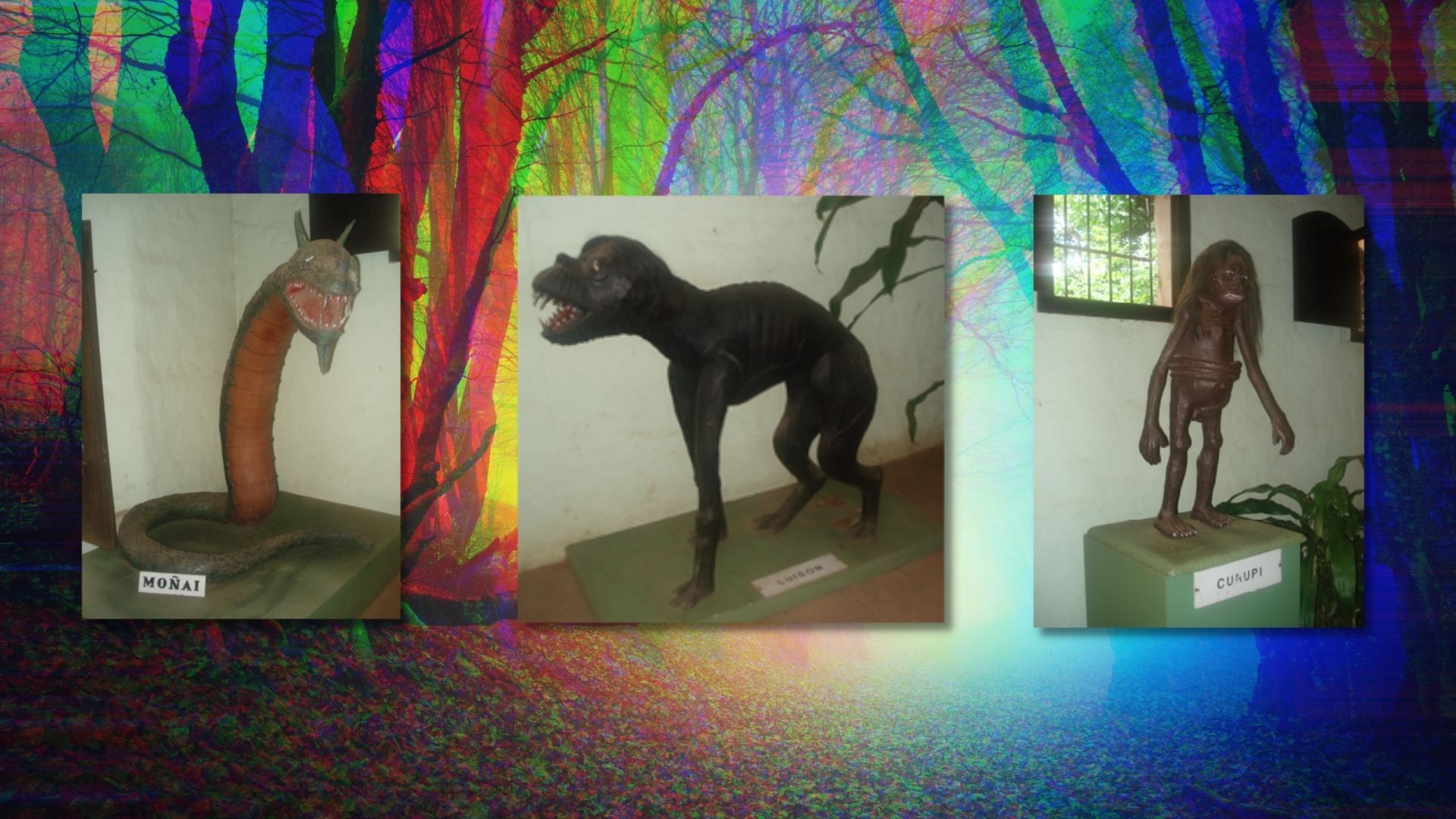
Lycanthropy & Long Members: Paraguayan Mythology Is Full of Great Game Ideas
One of my favorite things about horror is the blend of universal themes and unique, regional flavors. There’s something very special about getting scared by something new. We experienced this in the early 2000s, when the Japanese horror craze took off. We hadn’t seen anything quite like The Ring or The Grudge in the West, and therefore, didn’t know we could get scared by it. Paraguayan mythology holds the same potential. Pombero: Lord of the Night has already given us a glimpse of what can be achieved by infusing video games with Guaraní folklore. Today, I want to show you just how much still remains to be explored within Paraguayan mythology, in the realm of video games.
Taú & Keraná: The Horror Power Couple
One of the most famous legends in Paraguayan mythology is that of Taú and Keraná. Taú was an evil spirit who fell in love with the beautiful and innocent Keraná. Keraná, a young woman whose name literally means “she who sleeps a lot”, falls in love with Taú after the spirit takes on a human form. Naturally, the people of Keraná’s tribe aren’t all that happy about one of their own marrying an evil spirit. So they enlist the help of Angatupyry (The Spirit of Good), who proceeds to cast a curse on the couple. Taú and Keraná would have 7 children, all of them monsters.
Teyú Yagua, Mbói Tui, Moñai, Jasy Jateré, Kurupí, Ao Ao, and Luisón each had their own powers and abilities. They all contributed heavily to the 7 years of misery that befell Kerana’s tribe, and the story is fascinating. Sadly, it is perhaps a bit too extensive to go over it in full, so I’ll focus on my three favorite children in this chapter of Paraguayan Mythology: Luisón, Moñai and Kurupí.
Luisón: Paraguay’s Werewolf

The seventh child of Taú and Keraná’s unholy union is the most feared of the legendary beasts. It is said that the seventh male son of a Paraguayan family is destined to become a Luisón. The Luisón shares much with the European version of the Werewolf myth, lending perhaps a bit of credence to the possible existence of lycanthropy. It’s a phenomenon similar to that of the appearance of dragons across multiple cultures in different regions of the globe.
Luisón smells of death, and is able to transform other men into Luisón by biting them (sound familiar?). He is the protector of wildlife and forests, and is said to inhabit the crossroads that separate life and death. The crazy thing about the similarities between Luisón and the European werewolf is that both accounts predate any known record of the Guaraní tribe meeting Europeans. How did these stories, so similar in their details, originate literally worlds apart without interaction between their originators? I do not know.
What I do know is that it would take very little to make Luisón appeal to Western audiences. It is, almost literally, a Paraguayan werewolf. Be it a story-driven experience like The Wolf Among Us, or something more akin to Monster Hunter, Luisón is primed to be a drop-in replacement to the generic werewolf. That’s also why, sadly, it wouldn’t be my first choice for a legend to bring into video game form. It’s too similar to what’s already out there. My next choice, however, is a bit more unique.
Moñai: a Giant Man-Snake With Antennae on his Head
The third and ugliest of Taú and Kerana’s children, Moñai is an interesting character. Master of the Air and protector of birds, he is less of a scary character than Luisón. In fact, of the main monsters in Paraguayan mythology, Moñai is the one that is perhaps the least scary. However, he has as much personality as any comic book character, and in fact, reminds me a lot of DC’s The Joker.

A prankster by nature, Moñai is the protector of thieves. He played a huge role in the conclusion of Taú and Keraná’s legend, as he fell in love with Porasy, Keraná’s mother and undercover kickass. Porasy fools Moñai into thinking she was in love with him, and during their wedding ceremony, she tries to kill him.
It doesn’t work, but Kerená and Porasy’s tribe is able to lock all 7 monsters attending the ceremony in the cave where it was taking place, killing them instantly. Sadly, this also killed Porasy, who became a martyr to save her tribe from the 7 children of doom.
Please, tell me why this story isn’t ripe for an RPG. I beg you. I can assure you, I will prove you wrong. Moñai also controls birds with his antennae, by the way. How cool is that?
There is so much potential for Moñai to be a mix between The Joker and some of the characters in M. Night Shyamalan’s Split, it’s unreal. If you want to talk about unreal, however, let me present to you the monster which I find the most fascinating in Guaraní folklore.
Kurupí: The Dwarf With a Big Penis

Now, this may be offensive to some, but please do keep in mind that this is part of Paraguayan mythology. This isn’t something I just made up for fun. With that out of the way, let’s talk about Kurupí. He is the fifth of Taú and Keraná’s children, and takes the form of a dark-skinned dwarf with a penis long enough to wrap around his waist several times. He symbolizes the virility spirit and phalic myth, and is thought to have been created to educate women on the perils of wandering far from their tribe.
Kurupí has the power to entice all women despite his grotesque appearance, as his penis has magic powers which make women lose their sanity. One may, however, escape Kurupí by climbing a tree or swimming across a river: his body is deformed and therefore unable to climb or swim. Kurupí rapes women, and in some regions of Paraguay and Brasil, is said to also be partly cannibalistic.
As you can see, Kurupí isn’t a cuddly bear. He is actually one of the most feared monsters in Guaraní folklore, due to the patriarcal structure of Paraguayan society.
Men feel intimidated by Kurupí’s ability to seduce women, and well… his other attributes. Kurupí will likely take the most finessing to bring to the video game medium, by the nature of the pain he inflicts on his victims. There is, however, huge potential to create a cathartic narrative around this myth.
Paraguayan Mythology Has Much More to Give
Though these three are certainly standouts in the firmament of mythical Guaraní stars, they are far from the only ones available. The whole Taú and Keraná saga has about a dozen total protagonists, all of which would make for incredible characters in video games. But Taú and Keraná are only a tiny chapter in the wider Paraguayan mythology.
There is also the Cycle of the Two Brothers, which is a tale of Gods who are siblings and must find balance between love and peace in the Heavens. Then, there is the Cycle of Diluge, which tells the story of when humankind and the Gods inhabited the First Earth together. Subsequently, rain destroyed the First Earth and the Second Earth emerged, where humankind and Gods lived separately. There’s also legend of a future Third Earth where everything will be perfect forevermore.
There is also Mala Visión, the specter who protects peace and the pureness of the jungle. A fantastic game has already been released around this myth, and and urge you to check it out. Rupave and Sypave, who were in essence the Adam and Eve of the Guaraní creationist legend. The list goes on.
Keep this in mind, then, as you work on your next project. Look outside the norm and bring these unique stories to a wider audience. Paraguayan developers are working hard to do this, of course. But simply because a myth originates in Paraguay, it does not mean that we are the only ones who can tap the rich stories which make part of our culture. How amazing would it be to see a game studio from Japan, or Germany, or Africa, tackle a Guaraní mythological creature for their next release? One can only dream.


